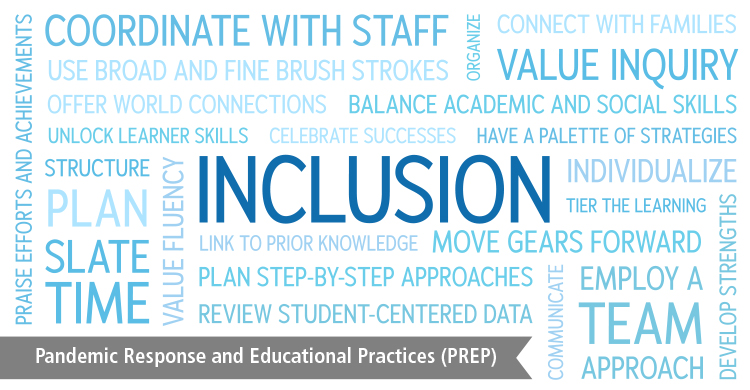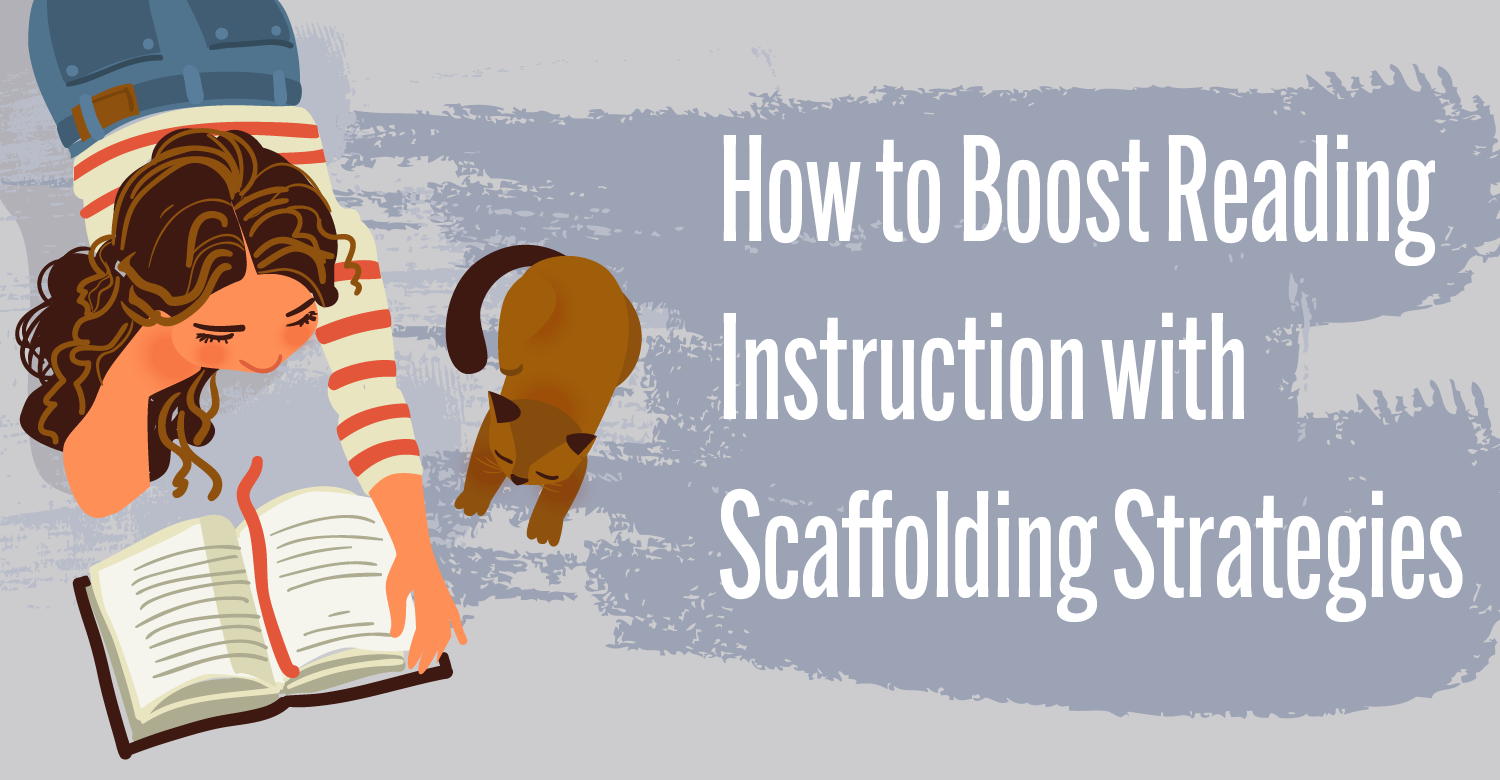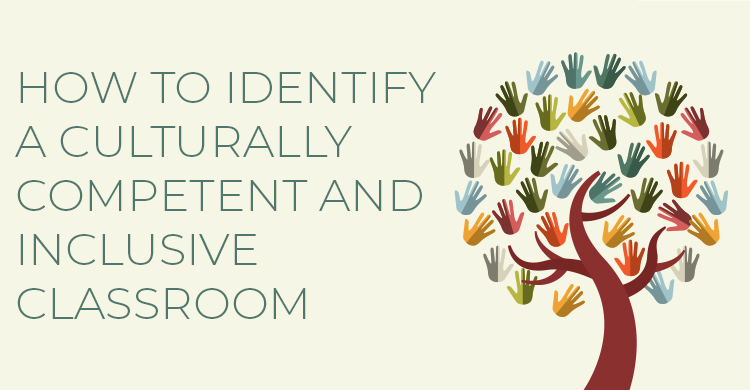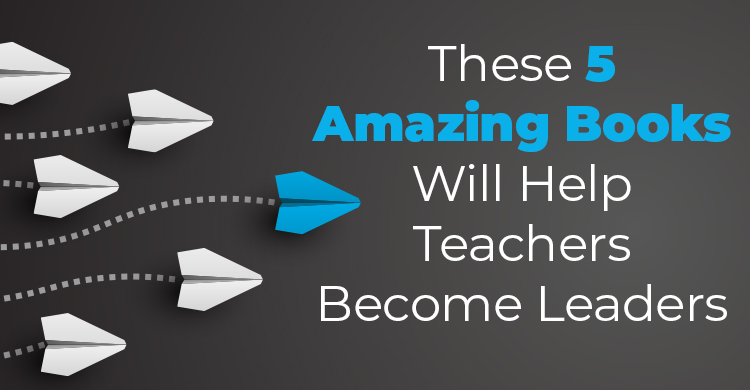This entry is the eighth in a blog series called Pandemic Response and Educational Practices (PREP), which aims to highlight and further the important work educators are doing amid the worldwide COVID-19 crisis.
Based on Inclusion Strategies and Interventions
During the first two weeks of March, I attended a Broadway show, presented at educational conferences, offered on-site inclusion coaching, received a massage, and whispered “namaste” in a yoga class.
Now, never has my refrigerator been so clean, has my dog received so much attention, nor have the kinks in my upper back been more pronounced. March definitely came in like a lion, but to date we have yet to welcome that calm lamb.
I am grateful that productivity continues, as I am in the midst of updating the second edition of Inclusion Strategies and Interventions. Ten years ago, when the book was first published, the inclusive knowledge, skill sets, and attitudes of general and special educators, administrators, and families were quite different. As I revise this resource, I can double down that inclusion practices are forever applicable: then, now, tomorrow, and even during a national emergency.
This is uncharted territory for all of us, but with “can-do and will-do” attitudes and collaborative practices, the evidence-based inclusive teaching methods are thriving online. Today’s practices and knowledge ensure tomorrow’s growth. The revisions I’m working on for this Solution Tree publication loudly roar: “Stagnation is never an option!”
Access is never denied, and progress is always monitored
A student with an individualized education program (IEP) is never denied services. The least restrictive environment (LRE) may be temporarily redefined, but access to an appropriate education requires immunity from regressive thinking. Reasonable efforts are made toward meeting the goals in a student’s IEP for this online environment, but services are never declined.
The idea is to assist learners of all skill sets to capitalize on strengths and to document how and when the services, accommodations and modifications are given. Data is valued and collected differently, but progress toward a student’s IEP goals is always monitored.
Related services may not be face-to-face, but as examples, occupational therapy on digital platforms and speech or language services through video conferencing are delivery options. Evaluations can be conducted through webinars or phone calls. When the American Psychiatric Association (APA) says “do good, avoid harm, be faithful and just,” those ethical principles also hold true for online environments!
It is important to use and value the information from universal screeners that were given when students were in school to guide the instruction. Instructional teams also need to plan for which screeners will be given when students return to classrooms to determine current levels, based on current informal online assessments and observational data.
Continue to value the diagnostic data, progress monitoring, and benchmark data to guide interventions. That data is now collected by a combination of school and home allies; e.g., teachers, paras, related service providers, academic and behavioral interventionists, case managers, parents, and/or students.
Although the physical environment differs, school support teams have important roles and responsibilities to effectively use this data to ensure that it is valid and responsive to learner needs. Progress monitoring is therefore student-specific and teacher-responsive. As examples, data may include determining fluency by hearing a student’s dictated recorded reading passage to tally the number of words read correctly to then assign an appropriately leveled passage; reviewing a student’s explanation of how he or she applied multiplication and division to solve a two-step math problem and then offering step-by-step problem solving strategies; or evaluating subject-verb agreement in an essay and then providing an online mini-lesson from NCTE’s Read, Write and Think.
Perhaps a student tallies the number of times he or she was focused on a task. This online instruction offers a perfect opportunity to increase student metacognition and to share constructive, timely, and individualized feedback. Efforts, progress, and achievement reveal pertinent information that when collected leads to the instructional decisions. Adjustments will definitely be made, but inclusion strategies and interventions never exclude students from motivating and interest-based lessons. Appropriate IEP-driven special education services are nonnegotiable, whether the instruction occurs in a traditional classroom or in a home environment.
Resources such as the IRIS Center are appropriate ones to share with families. Input is invited from a parent or caregiver, and family support is given. Plan your IEP meeting with the same intentions, but use different materials and means for participation. Document mitigating circumstances. If feasible and agreeable with districts and families, meetings can be recorded and visuals provided with screen-sharing. Confidential documents are sent by certified mail. Communication and collaboration with parents occur via telephone, video conferences, email, or perhaps in a Google Hangout.
Translation = Do things differently
Content, methodology, and delivery are always planned, whether students are learning at a classroom desk or by a kitchen table. Instructional supports given may be synchronous, e.g., given in real time with talks, in a chat room, or via live audio. Other supports and communications can also be asynchronous ones, such as flipped learning with videos, sending emails, or recorded slide tutorials for extra practice and or enrichment. Hosting a live author event, allowing a fidgety student more movement, providing a variety of genres on different reading levels, and offering a math tutorial are wonderful options to explore.
Learning to educate with an online platform such as Zoom, using a tool such as Wizer to create interactive worksheets with a BrainPop that explains what” flattening the curve” means, or staying in touch with your students by creating a video on Marco Polo, is now the “new norm.” You can explore how to communicate by text with families with Remind.com. These are just a few ways to continually and creatively teach, reach, include, and stay informed.
One of my professional development (PD) events in Maine that was scheduled for March occurred on Zoom at the end of April. I applaud the teachers who attended, since their plates were filled with tasks, such as teaching their own children and instructing students who had a variety of literacy and math levels, cultural backgrounds, and a spectrum of exceptionalities.
The 8:30 a.m.-to-3 p.m. PD continued, as a participant cared for an elderly parent and a dog walked across a keyboard (that was my laptop)! I thought that I prepared accordingly, but then, mid-stream, I varied the delivery and offered additional modeling. Technology was the platform, but to maximize the interactivity and applicability, I beefed up both the low tech and high-tech tools. That included break out room decisions, sharing resources on a Padlet, shaking maracas, and using lyrics to solidify the content and to signal transitions.
We annotated multi-tiered K-12 lessons with a step-by step approach that linked to their prior knowledge and their students’ diverse skill sets. Together, we collaborated in this online environment, planned how to best implement the inclusive practices for virtual instruction, and developed plans for when we return to the classrooms.
At another Virtual PD session this month, I offered strategies to families as they educate their children at home. Concerns raised included how to handle this level of academic intensity, support related services, avoid meltdowns, continue social skills, and organize the days and weeks. The headings for the strategies and interventions I offered included how to: (1) Establish positive attitudes, (2) Help, not enable (3) Plan and prepare, (4) Balance emotions and academics, and (5) Breathe and smile.
24 inclusive ways to promote the learning
As always, learning is promoted, just differently, and collaboratively. I recently created this edugraphic to highlight the BIG IDEAS of the 2nd ed of Inclusion Strategies and Interventions. I empower you as readers, educators, and learners to investigate the ones that are applicable to your staff and students. These twenty-four annotated hyperlinked actions offer academic, social, emotional, and mind filled, action-packed, result-oriented inclusion interventions for educators, families, and students.
As an adaptation and to honor different levels, I offer the visual and online sites to explore. Please turnkey this example and think about how you share and display information in multiple ways. As you move forward to provide online instruction, collaborate with colleagues, communicate with families, support your students, and prepare to reenter classrooms, always value the inclusive practices.
And, last, but never least: “Namaste to all!”
- Plan
- Organize
- Structure
- Communicate
- Coordinate with staff
- Connect with families
- Employ a team approach
- Value inquiry
- Unlock learner skills
- Link to prior knowledge
- Have a palette of strategies
- Use broad and fine brush strokes
- Review student-centered data
- Tier the learning
- Balance academic and social skills
- Individualize
- Plan step-by-step approaches
- Offer world connections
- Develop strengths
- Slate time
- Praise efforts and achievements
- Value fluency
- Move gears forward
- Celebrate successes!
[author_bio id=”394″]
Inclusion Strategies and Interventions is available for purchase on Amazon and SolutionTree.com.






